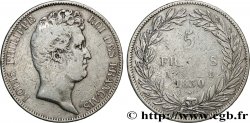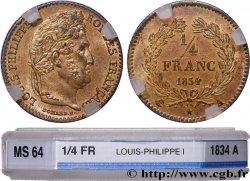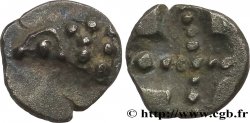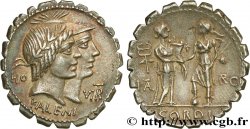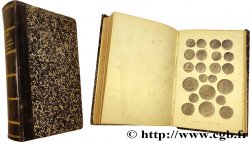Live auction - fme_957496 - LUDWIG PHILIPP I Médaille d’inauguration de la bibliothèque Ste Geneviève
Sie müssen angeschlossen sein und von cgb.fr genehmigt werden, um in einer E-Auktion teilzunehmen.Melden Sie sich an, um zu wetten..Die Kontobestätigungen sind innerhalb von 48 Stunden nach Ihrer Anmeldung gemacht.Warten Sie nicht bis die letzten zwei Tage vor dem Abschluss eines Verkaufs, um Ihre Registrierung abzuschließen. Klickend "BIETEN" verpflichten Sie sich vertraglich, diesen Artikel zu kaufen und Sie nehmen ohne Reserve die allgemeinen Verkaufsbedingungen für den live auctions zu cgb.fr an.
Der Verkauf wird an der Zeit auf der Übersichtsseite angezeigt geschlossen werden. Angebote, die nach der Schließung Zeit empfangen sind, werden nicht gültig.
Bitte beachten Sie, dass die Fristen für die Einreichung Ihres Angebots auf unsere Server können variieren und es kann zur Ablehnung Ihres Angebots entstehen, wenn es in den letzten Sekunden des Verkaufs gesendet wird. Die Angebote sollen mit ganzer Zahl ausgeführt sein, Sie können Kommas oder des Punktes in Ihrem Angebot nicht erfassen. Bei Fragen klicken Sie hier, um einen Blick auf die FAQ Live-Auktionen.
Alle Gewinngebote unterliegen einem Aufschlag von 18 % für Verkaufskosten.
Alle Gewinngebote unterliegen einem Aufschlag von 18 % für Verkaufskosten.
| Schätzung : | 120 € |
| Preis : | 72 € |
| Höchstgebot : | 72 € |
| Verkaufsende : | 08 Oktober 2024 15:01:19 |
| Bieter : | 2 Bieter |
Type : Médaille d’inauguration de la bibliothèque Ste Geneviève
Datum: 1844
Name der Münzstätte / Stadt : 75 - Paris
Metall : Kupfer
Durchmesser : 68,5 mm
Stempelstellung : 12 h.
Graveur KLAGMANN Jules (1810-1867)
Gewicht : 157,30 g.
Rand lisse + main CUIVRE
Punze : main indicatrice (1845-1860) et CUIVRE
Kommentare zum Erhaltungszustand:
Patine hétérogène. Traces d’un léger nettoyage. De l’usure sur les reliefs. Présence de coups sur la tranche
Vorderseite
Titulatur der Vorderseite LOI DU 19 JUILLET 1843 / LOUIS PHILIPPE REGNANT / MR TESTE / MINISTRE DES TRAVAUX PUBLICS / MR VILLEMAIN / MINISTRE DE L’INSTRUCTION PUBLIQUE.
Beschreibung Vorderseite Médaillon avec le portrait de Louis-Philippe, lauré de profil à gauche, posé sur un autel encadré de deux allégories féminines drapées à l’antique, celle de gauche accostée d’un coq et celle de droite accostée d’une chouette. Signé : J. KLAGMANN - D. FOURNERA..
Rückseite
Titulatur der Rückseite VUE INTÉRIEURE DE LA BIBLIOTHÈQUE STE GENEVIÈVE // LA PREMIÈRE PIERRE DE CE MONUMENT / A ÉTÉ POSÉE LE 12 AOÛT 1844 / PAR MR DUMON MINISTRE DES TRAVAUX PUBLICS / MR LABROUSTE ARCHITECTE.
Beschreibung Rückseite Vue intérieure de la Bibliothèque, un cartouche à l’exergue avec une légende en quatre lignes.
Kommentare
Jean-Baptiste-Jules Klagmann, né le 1er avril 1810 à Paris où il est mort le 18 janvier 1867, est un sculpteur français. Klagmann s’illustre principalement comme sculpteur-décorateur. Il travaille notamment pour la porte des Séances du Sénat et les boiseries de son hémicycle, ainsi que pour les décorations de la deuxième Salle Favart de l’Opéra-comique à Paris.
La bibliothèque Sainte-Geneviève (BSG) est une bibliothèque située au 10 place du Panthéon, dans le 5e arrondissement de Paris. Elle occupe un bâtiment édifié en 1851 par l'architecte Henri Labrouste1 à l'emplacement de l'ancien collège de Montaigu, agrandi depuis et classé, avec ses aménagements et décors d'origine, au titre des monuments historiques. Elle est l'héritière de la troisième plus importante bibliothèque d'Europe, en son temps, que l'ancienne abbaye Sainte-Geneviève de Paris voisine, transformée en École centrale à la Révolution, abritait au dernier étage de ce qui est aujourd'hui le lycée Henri-IV.
.
Jean-Baptiste-Jules Klagmann, born on April 1, 1810 in Paris and died on January 18, 1867, was a French sculptor. Klagmann distinguished himself primarily as a sculptor-decorator. He notably worked on the door of the Sessions of the Senate and the woodwork of its hemicycle, as well as on the decorations of the second Salle Favart of the Opéra-Comique in Paris. The Sainte-Geneviève Library (BSG) is a library located at 10 Place du Panthéon, in the 5th arrondissement of Paris. It occupies a building constructed in 1851 by the architect Henri Labrouste1 on the site of the former Collège de Montaigu, which has since been enlarged and is listed, with its original fittings and decorations, as a historic monument. It is the heir to the third most important library in Europe, at the time, which the former Sainte-Geneviève Abbey in neighboring Paris, transformed into the École Centrale during the Revolution, housed on the top floor of what is now the Henri-IV high school.
La bibliothèque Sainte-Geneviève (BSG) est une bibliothèque située au 10 place du Panthéon, dans le 5e arrondissement de Paris. Elle occupe un bâtiment édifié en 1851 par l'architecte Henri Labrouste1 à l'emplacement de l'ancien collège de Montaigu, agrandi depuis et classé, avec ses aménagements et décors d'origine, au titre des monuments historiques. Elle est l'héritière de la troisième plus importante bibliothèque d'Europe, en son temps, que l'ancienne abbaye Sainte-Geneviève de Paris voisine, transformée en École centrale à la Révolution, abritait au dernier étage de ce qui est aujourd'hui le lycée Henri-IV.
.
Jean-Baptiste-Jules Klagmann, born on April 1, 1810 in Paris and died on January 18, 1867, was a French sculptor. Klagmann distinguished himself primarily as a sculptor-decorator. He notably worked on the door of the Sessions of the Senate and the woodwork of its hemicycle, as well as on the decorations of the second Salle Favart of the Opéra-Comique in Paris. The Sainte-Geneviève Library (BSG) is a library located at 10 Place du Panthéon, in the 5th arrondissement of Paris. It occupies a building constructed in 1851 by the architect Henri Labrouste1 on the site of the former Collège de Montaigu, which has since been enlarged and is listed, with its original fittings and decorations, as a historic monument. It is the heir to the third most important library in Europe, at the time, which the former Sainte-Geneviève Abbey in neighboring Paris, transformed into the École Centrale during the Revolution, housed on the top floor of what is now the Henri-IV high school.








 Berichten über einen Fehler
Berichten über einen Fehler Die Seite drucken
Die Seite drucken Teilen meiner Auswahl
Teilen meiner Auswahl Stellen Sie eine Frage
Stellen Sie eine Frage Einlieferung/Verkauf
Einlieferung/Verkauf
 Details
Details

